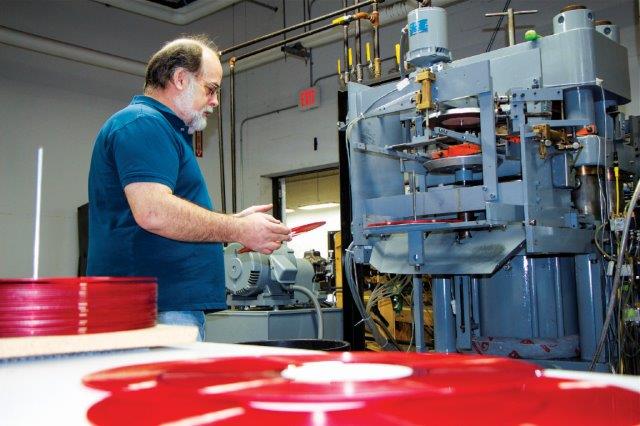FOR IMMEDIATE RELEASE
ACS News Service Weekly PressPac: June 15, 2016
Making vinyl records even groovier
"Groovy chemistry"
Chemical & Engineering News
Audiophiles have reason to celebrate. Vinyl records are experiencing a comeback, and scientists are working to make their sound quality even better. An article in Chemical & Engineering News (C&EN), the weekly newsmagazine of the American Chemical Society, takes a look at how past inventions led to the classic vinyl record, or LP, and what the future might hold.
Matt Davenport, associate editor at C&EN, notes that early iterations of sound recording devices were actually tubular, dating back to Thomas Edison’s invention of the phonograph in 1877. His original cylinder wrapped in tin foil gave way to a wax version created in the lab of another great inventor, Alexander Graham Bell. New studies of wax cylinders suggest that the material is very stable over time when handled properly. But more convenient flat records eventually took over. Initially, they were made of celluloid and rubber, and then shellac became the industry standard until the more user-friendly format of vinyl records came along in the mid-20th century. Then came cassettes, CDs and then MP3s.
But rather than going the way of the wax cylinder, LPs have weathered the digital revolution. Sales in the U.S. last year exceeded $400 million. It was vinyl’s best year since 1988, even beating out revenue from one of today’s most popular forms of music consumption, free online streaming. Now chemists are experimenting with different vinyl formulations to create records with higher quality sound. If they succeed, even more listeners could migrate back to the old-school technology.


